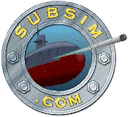|
|
||||
 The
U-boat War The
U-boat WarAuthor: David
Westwood
"The German U-boat arm was not merely stretched, it was operating in penny packets, something that was inimical to its success." Any book covering the U-boat war of 1939-45 naturally begins with the decisions by the Nazi state that ultimately ensured the defeat of the U-boats. David Westwood's moderately-sized and reader-friendly volume picks up the narrative after the defeat of Imperial Germany in WWI. Banned from operating submarines, the Germans circumvented the Versailles Treaty with a program of advising, training and contracting-out submarine construction for neighboring Turkey, Spain, and Finland. As the Nazis took power and plummeted the world toward catastrophe, Chief of the Navy Erich Raeder and Commander of U-boats Karl Doenitz undertook a rapid construction program that initially put commerce-raiding subs on equal footing with battleships. Hitler's desire to ignite the war in Sept. 1939 (due in part because opposing powers began to take his rhetoric and re-arming programs seriously) denied Raeder the time necessary to build the 300 U-boat fleet that would be required to take on the Royal Navy. Instead, Germany had a scant 49 U-boats ready to begin patrol and fought a game of catch-up that would doom the Kriegsmarine. Foremost on the mind of the U-boat planners was the problem of British ASDIC (sonar), the sound locating system developed near the conclusion of the First World War. The British Navy had such confidence in the technology that they seriously considered the submarine threat neutralized. The German Naval Command had other ideas, namely to develop tactics that could marginalize ASDIC and still allow a submarine to attack and retreat against enemy shipping. This included mental training to "immunize the U-boat (crews) against the Asdic sonic transmissions". U-boats would seek conditions favorable to their strengths: attack at night on the surface, where Asdic would not have the power to find them; to use the low and narrow profile of the U-boat to avoid visual detection; and to gather en masse in "wolfpacks" to overwhelm the escort screens and ensure maximum havoc and confusion. Another tactic, employing modern radio technology to allow headquarters to concentrate and guide the U-boats to convoy positions, would work against the Germans. Frequently excessive use of the radio ("chatting" with top commanders in the field of battle is rightfully characterized by Westwood as "criminally negligent" of Doenitz) allowed the British code breakers at Bletchley park to read the Germans' Enigma signals. U-boats reporting back to headquarters routinely suffered as a result of giving away their position to British direction finding teams.
Ultimately the efforts not only failed but contributed substantially to the destruction of the U-boat service. Allied (mainly British) intelligence routed convoy traffic around and away from wolfpacks. Intercepting the enemy's reports assisted hunter-killer groups in tracking and sinking U-boats in the vast oceans.
The U-boat War skillfully chronicles the logistical issues and technological gains that worked for and against the U-boats. Early in the war the Germans suffered from torpedo failures that were incredibly similar to that of the Americans in the Pacific; the Germans solved their problems quickly while the American sub crews suffered from defective torpedoes for nearly three years. German and Allied development of radar is examined. Each side sought to gain a step in this critical technology which led to measures and counter-measures that would swing the fight back and forth. When the Allies ultimately refined radar midway through the war, it took away the one element that the U-boats needed most to be effective (and indeed, to survive); radar meant U-boats could not use cover of night for surface attacks. Escorts could pinpoint a surfaced U-boat miles away, direct an attack. When the U-boat dived the escorts could strike using Asdic to track it until the boat was sunk or driven to the surface. Doenitz favored simplified design and logistical answers to the problem of developing and constructing boats under the press of war. The Type VII was considered his primary weapon. It could dive quickly, had a tight turning radius, and the small size was harder to detect by Asdic. However, its dreadfully slow underwater speed and limited range were no match for experienced Asdic operators. With the entry of the US in the war, the larger, longer-ranging Type IX, which could carry more torpedoes and fuel, began to surpass the Type VII in sinkings. With the turning of the war in May 1943, it was evident that better designs would be necessary for success against Allied convoys and hunter-killer groups; a "true submarine" was the only hope. The Type XXI U-boat, a larger, dramatically more powerful design with more than twice the underwater speed of the earlier types, was recognized as the German answer in the convoy war. But shipbuilding would be hindered by shortages and Allied attacks. Westwood pays out close attention to the struggle for resources between the Army and Navy over steel and manpower.
Desperation being the breeding ground for failure, the new, vastly superior U-boats saw very little action in the last stages of the war. Had the Type XXI design been adopted and implemented earlier in the war, there is little doubt the Allies would have suffered great setbacks. Understanding why the war was lost, what events contributed to the defeat of the German U-boat arm, added measurably to my knowledge. The U-boat War devotes several sections to specific convoy attacks and patrols--the exploits of noted U-boat warriors--which make good reading, but it is Westwood's studied analysis of the tactics, planning, technology, and logistics that elevates his book above mere war chronicle.
|

